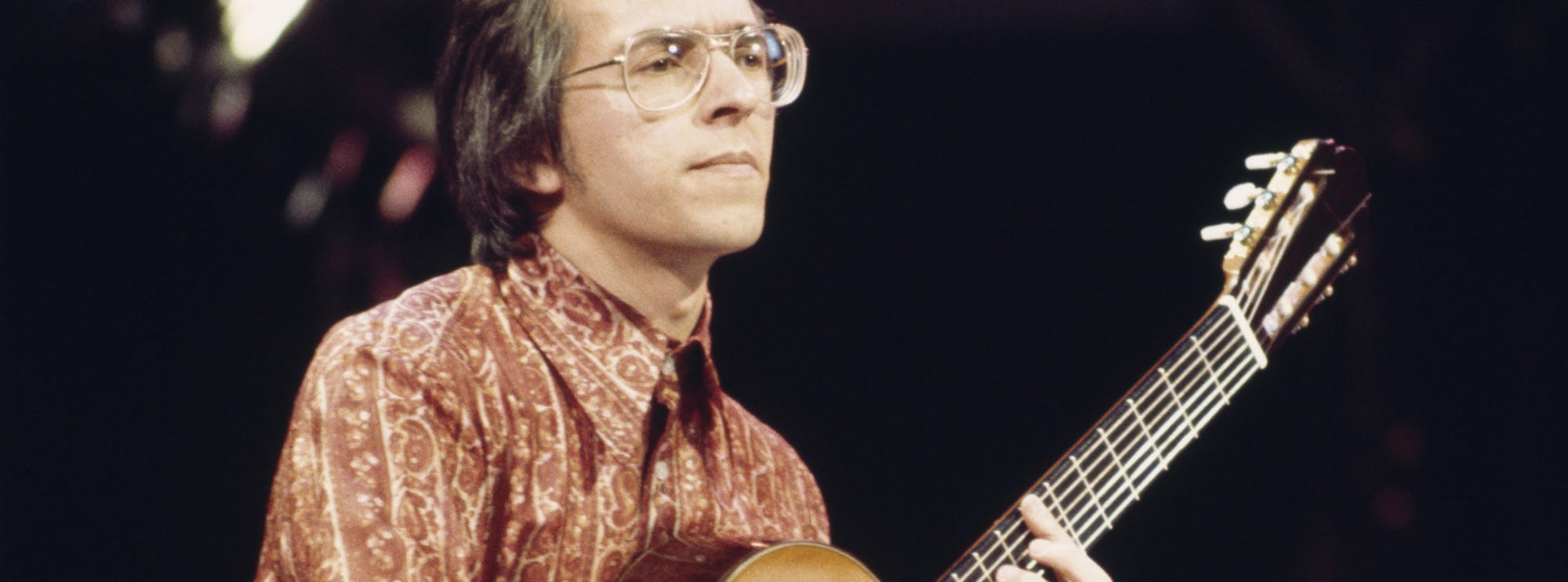Diary Of A Madman by Ozzy Osbourne: A guitarist's perspective
Guitar lessons by Danny Gill
Released in 1981, "Diary of a Madman" is the second solo album by Ozzy Osbourne. The album features the iconic Randy Rhoads on lead guitar, who played a significant role in shaping its sound. Rhoads, a classically-trained musician, brought neoclassical elements to heavy metal, which led to the creation of an entirely new and captivating sound. Packed full of immense riffs including, “Over the Mountain,” “Flying High Again” and “S.A.T.O,” this classic album also has some subtle and dynamic moments with the tracks, “You Can’t Kill Rock and Roll” and the heartrending power ballad “Tonight.”
In this guitar lesson course, Lick Library veteran, Danny Gill walks you through the many highlights of each song one phrase at a time, including the multi-layered neoclassical masterclass in the legendary guitar solos throughout this classic album.. This article will provide a detailed analysis of each song on the album, with a focus on guitar scales, solo analysis, and Rhoads' contributions.
1. Over the Mountain
"Over the Mountain" starts the album with a bang, featuring a powerful riff in E minor. The song's main riff is based on a three-string power chord pattern, which incorporates pull-offs and palm-muted notes, creating a driving rhythm. The solo in this song is a combination of E minor pentatonic, E Dorian, and E natural minor scales, featuring alternate picking and legato techniques, along with an impressive use of tapped harmonics.
2. Flying High Again
The second track, "Flying High Again," showcases Randy's ability to create catchy riffs, as evidenced by the main riff in A Mixolydian. The chorus is centred around a descending chord progression using barre chords, giving it an anthemic feel. The solo, played in A minor pentatonic, is a masterclass in bends, vibrato, and phrasing.
3. You Can't Kill Rock and Roll
"You Can't Kill Rock and Roll" starts with an arpeggiated chord progression in E minor, featuring finger-picking and hybrid picking techniques. The main riff includes power chords and palm-muted open-string riffs. The solo is a tasteful blend of E minor pentatonic, E Dorian, and E natural minor scales, with an emphasis on melodic phrasing, string bending, and double-stops.
4. Believer
"Believer" showcases a heavy and syncopated rhythm with an emphasis on power chords and palm muting. The pre-chorus includes a chromatic chord progression, while the solo features a mix of E Phrygian Dominant and E natural minor scales, with techniques such as sweep picking, legato, and pinch harmonics.
5. Little Dolls
"Little Dolls" opens with a galloping rhythm in E minor, using power chords and palm-muted open strings. The chorus features a descending chord progression played with barre chords. The solo utilizes E minor pentatonic and E Dorian scales, incorporating alternate picking, double-stop bends, and bluesy bends.
6. Tonight
"Tonight" is a ballad with a clean, arpeggiated chord progression in the verses, highlighting Rhoads' finger-picking skills. The chorus includes power chords and barre chords, while the solo features the E natural minor scale, using techniques such as slides, legato, and tasteful vibrato.
7. S.A.T.O.
"S.A.T.O." opens with a clean, arpeggiated chord progression in G major, transitioning to a heavier, power chord-driven riff. The solo is based on G major and G Mixolydian scales, demonstrating Rhoads' ability to combine melodic phrasing with fast alternate picking and string bending.
8. Diary of a Madman
The title track, "Diary of a Madman," showcases Randy's classical influences, starting with a haunting acoustic intro featuring finger-picking and Travis picking techniques. The song transitions to heavy power chord riffs, and the solo highlights a mixture of E Phrygian Dominant and E natural minor scales. The solo exhibits Rhoads' exceptional skills in legato, sweep picking, and two-handed tapping.
Randy Rhoads: The Lead Guitarist
Randy Rhoads' contribution to "Diary of a Madman" cannot be overstated. His classical training and unique playing style brought a fresh perspective to heavy metal. Rhoads infused neoclassical elements into his guitar work, which complemented Ozzy's vocal style and enhanced the album's overall atmosphere.
Rhoads' solos on this album are not only technically impressive but also demonstrate his exceptional melodic sense and ability to convey emotion through his playing. His innovative use of various techniques, scales, and chord progressions created a guitar sound that is still admired and emulated by many guitarists today. The album features a wide range of rhythmic approaches, such as syncopated rhythms, palm muting, galloping rhythms, and open-string riffs, which contribute to its dynamic and powerful sound. Additionally, Rhoads' penchant for combining scales and modes, like natural minor, Dorian, Mixolydian, and Phrygian Dominant, results in highly expressive and emotive solos. His expertise in finger-picking, hybrid picking, and Travis picking techniques further enriches the album's sonic landscape, adding depth and intricacy to the compositions.
"Diary of a Madman" serves as an excellent study of guitar techniques for aspiring guitarists and offers a wealth of inspiration for players across all skill levels. Randy Rhoads' masterful application of diverse techniques has left an indelible mark on heavy metal and continues to influence generations of musicians.
In conclusion, Ozzy Osbourne's "Diary of a Madman" is a seminal album in heavy metal, with Randy Rhoads' exceptional guitar work playing a pivotal role in its success. Rhoads' unique blend of classical and heavy metal techniques, along with his innovative approach to melody and phrasing, helped create a distinctive sound that has stood the test of time. For guitarists, this album serves as a masterclass in technique, composition, and the art of crafting memorable solos.
Guitar Techniques Used in "Diary of a Madman"
"Diary of a Madman" by Ozzy Osbourne is a guitar-driven masterpiece, showcasing a diverse array of guitar techniques. Randy Rhoads, the lead guitarist, utilized his classical training and metal sensibilities to craft innovative and memorable guitar parts throughout the album. Rhoads' playing is characterised by a seamless fusion of traditional techniques, such as string bending, vibrato, and alternate picking, with more advanced skills, including sweep picking, two-handed tapping, and tapped harmonics.
Below is a list of guitar techniques used throughout "Diary of a Madman." Links are provided for further exploration of each technique:
- Vibrato
- Alternate Picking
- Legato
- Tapped Harmonics
- Double-Stop Bends
- Pinched Harmonics
- Trills
- Chord Progressions
- Arpeggios
- Pull-Offs
- Power Chords
- Palm Muting
- Barre Chords
- Two-Handed Tapping
- Sweep Picking
- Finger-Picking
- Hybrid Picking
- Hammer-Ons
- Double-Stops
- Slides
- Travis Picking
- String Bending
- Syncopated Rhythms
- Open-String Riffs
- Bluesy Bends
- Chromaticism
- Altered Tunings
- Galloping Rhythms
- Dual Guitar Harmonies
- Arpeggiated Chord Progressions
About The Tutor
Tutor Profile
Danny Gill
Danny Gill is, without a doubt, the most loved tutor by our community. With an incredible array of DVDs and web lessons for LickLibrary covering a wide variety of topics all of which he covers with incredible detail, it's no wonder he carries as much respect as he does. As...




